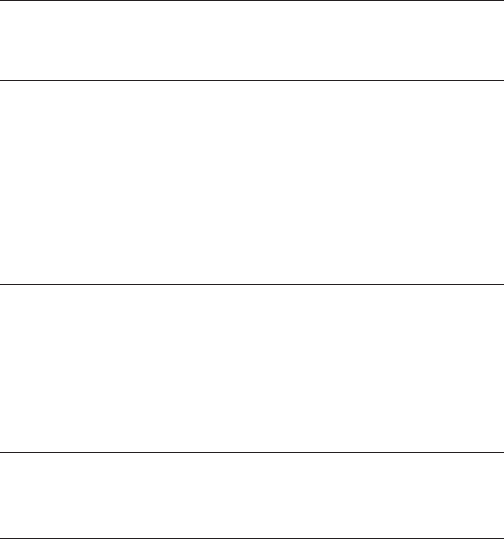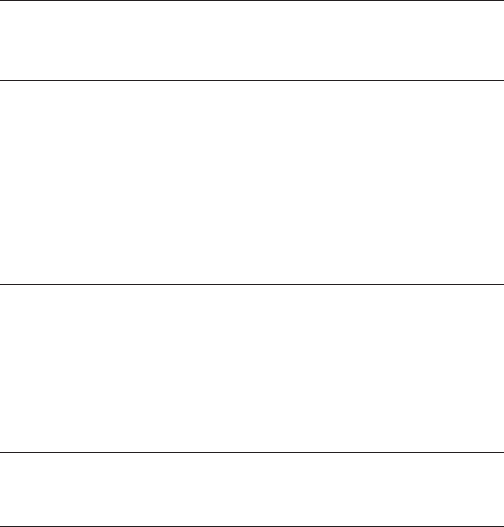Actiontec Electronics C1000A Wireless 11n VDSL2/GigE Modem Gateway User Manual
Actiontec Electronics Inc Wireless 11n VDSL2/GigE Modem Gateway Users Manual
Users Manual
1
ActiontecElectronics,Inc.
760NorthMaryAve.,Sunnyvale,CA94085USA
Wireless11nVDSL2/GigEModemGateway
Model#:C1000A
QuickStartGuide
Version:1.0(Drafttobereview)
2
ConnecttheGatewaytoaComputer
1.GetC1000AWireless11nVDSL2ModemGatewayfromtheQuickStartKitandtakeitoutofthebag.
2.GetthePowerCordfromyourDSLQuickStartKit.
(Power:External,12VDC,1.5AmadebyLeaderElectronicsInc.;Model:MU18‐D120150‐A1)
3.PlugthesmallerendofthePowerCordintotheBlackPortonthebackoftheGateway.
4.PlugthelargerendofthePowerCordintoaPowerOutlet.
5.MakesurethePowerSwitchisOn.
6.MakesurethePowerLightontheGatewayisSOLIDGreen.
7.GettheYellowCable.
8.PlugoneendoftheYellowCableintoanyoftheYellowPortsonthebackoftheWirelessDSLGateway.
9.Makesurethatyourcomputeristurnedon.Then,plugtheotherendoftheYellowCableintothe
EthernetPortonthebackofthecomputer.AnEthernetPortlookssimilartoaregularPhoneJack,butis
slightlylarger.
10.Makesurethat1ofthe4EthernetlightsontheGatewayisGreen.Thismaytakeafewmoments.
11.GettheBlackorGreenDSLCablefromyourDSLQuickStartKit.
12.PlugoneendoftheDSLCableintotheGreenPortlocatedonthebackoftheGateway.
13.PlugtheotherendoftheDSLCableintothePhoneJackclosesttoyourComputer.
14.MakesureAllDeviceswiththesamephonenumberasyourDSLLinehasPhoneFilters.Thisincludes
telephones,faxmachines,callerIDboxes,satelliteTVreceivers,TiVodevices,andansweringmachines.
15.MakesurethatthatPowerandDSLLightsaresolidGreen.Thismaytakeupto30seconds.
Note:IftheDSLLightcontinuestoblink,makesureyoureceivednotificationfromyourDSLInternetService
ProviderthatyourDSLservicehasbeenactivated.
3
ConfiguretheGateway
1.OpenaWebBrowser(FireFoxorInternetExplorer,forexample).Intheaddressbar,enter
http://192.168.0.1thenpressEnteronthekeyboard.
Note:Whenyouopenyourwebbrowseryoumaygetapagecannotbedisplayederror.Thisisnormaland
willnoteffecttheinstructionsinstep1.
2.The"MainMenu"screenappears.SelectQuickSetup
Note:Ifthisscreendoesnotappear,makesureourEthernetportisconfiguredforDynamicIP.
3.SelectNoRealmfromthedropdownmenuthenenterthePPPusernameandpassword.
ConfigureWirelessConnectionandSecurity
1.ClickonWirelessSetup.
2.Selectanameforyourwirelessnetworkandenteritinthe"NetworkName"field.ThenclickApply.
3.ClickonWirelessSecurityfromtheleftcolumnmenu.
4.SelectthetypeofwirelesssecuritythatyouwanttouseActiontecrecommendsusingWPA&WPA2.The
followingstepswillshowyouhowtoenableWPA&WPA2wirelesssecurity.
Note:Allofyourotherwirelessdeviceswillneedtosupportthatsametypeofwirelesssecuritychosenin
ordertoconnecttoyourwirelessnetwork.
5.Enterinapasswordorpre‐sharedkey.Thekeymustbeatleast8characterslong.ClickApplyto
continue.
Congratulationsyouarenowconnected!
4
Specifications
1. Features
• SupportsPlug‐and‐Playinstallation.
• Compliantwithfull‐rateANSIT1.413Issue2andITUG.992.1(G.dmt)standard.
• ADSL2+/VDSL2Compliant
• DMTmodulationanddemodulation.
• SupportsRFC1483(bridgedEthernetoverATM)forLANmode.
• Full‐rateadaptivemodem:max.Downstreamrateis8Mbps,max.
Upstreamrateis1Mbps.
• CompliantwithIEEE802.3Ethernetstandard.
• Supports10BaseT,100BaseTand1000BaseT.
• 2.4GHzIEEE802.11n.
• Supports20MHzchannelswithoptionalSGI.
• FullIEEE802.11b/g/nlegacycompatibilitywithenhancedperformance.
ComprehensivewirelessnetworksecuritysupportthatincludesWPA,WPA2,andAES
encryption/decryptioncoupledwithTKIPandIEEE802.1Xsupport
• Support802.11bandDraftSTD802.11gModulation.
• 802.11bDataRates:11Mbit/s,5.5Mbit/s,2Mbit/s,1Mbit/s(And22Mbit/swithPBCC).
• 802.11gDataRates:6Mbit/s,9Mbit/s,12Mbit/s,18Mbit/s,24Mbit/s,36Mbit/s,48Mbit/s,54Mbit/s.
• 802.11gDataRates:65Mbit/s,130Mbit/s.
2. Powerrequirements
• Operatingvoltage: +12V+/‐5%@1.5Amax
• PowerDissipationActive:12VDC@xxxmA(typical)
3. EnvironmentalOperatingRange
• Operatingtemperature: 0ºCto40ºC(32ºFto104ºF)
• Humidity: 8‐95%,non‐condensing
4. DimensionandWeight
• 8.8”(L)x5.6”(W)x1.4”(H)0.75lb.
5. Certifications
• FCCPart15ClassB,ClassCandPart68;SafetyUL/cUL

General Regulatory and Compliance Notices
Important Safety Instructions
If applicable, when using telephone equipment, basic safety precautions should always be followed to reduce the risk of fire, electrical
shock, and personal injury, including the following:
•Do not use this product near water –for example, near a bathtub, kitchen sink, laundry tub, or swimming pool, or in a wet basement;
•Avoid using a telephone (other than a cordless type) during an electrical storm, as there may be a remote risk of electrical shock
due to lightning;
•Do not use the telephone to report a gas leak in the vicinity of the leak;
•Use only the power cord and batteries indicated in this manual;
•Do not dispose of batteries in fire, as they may explode – check with local codes for possible special disposal instructions.
Telephone Line Cord Caution
To reduce the risk of fire, use only No. 26 AWG or larger (e.g., 24 AWG) UL Listed or CSA Certified Telecommunication Line Cord.
Coaxial Cable
If applicable, the coaxial cable screen shield needs to be connected to the Earth at the building entrance per ANSI/NFPA 70, the National Electrical
Code (NEC), in particular Section 820.93, “Grounding of Outer Conductive Shield of a Coaxial Cable,” or in accordance with local regulation.
FCC Class B Equipment
This equipment has been tested and found to comply with the limits for a Class B digital device, pursuant to Part 15 of the FCC Rules. These
limits are designed to provide reasonable protection against harmful interference in a residential installation. This equipment generates,
uses and can radiate radio frequency energy and, if not installed and used in accordance with the instructions, may cause harmful
interference to radio communications. However, there is no guarantee that interference will not occur in a particular installation. If this
equipment does cause harmful interference to radio or television reception, which can be determined by turning the equipment off and
on, the user is encouraged to try and correct the interference by implementing one or more of the following measures:
•Reorient or relocate the receiving antenna;
•Increase the separation between the equipment and receiver;
•Connect the equipment to an outlet on a circuit different from that to which the receiver is connected;
•Consult the dealer or an experience radio or television technician for help.
Modifications
The FCC requires the user to be notified that any changes or modifications made to this device that are not expressly approved by
Actiontec Electronics, Inc, may void the user’s authority to operate the equipment.
Declaration of conformity for products marked with the FCC logo – United States only.
This devices complies with Part 15 of the FCC Rules and with Industry Canada license-exempt RSS standard(s). Operation is subject to
the following two conditions:
1.This device may not cause harmful interference;
2.This device must accept any interference received, including interference that may cause undesired operation of the device.
Canadian Industry Regulations
This product meets the applicable Industry Canada technical specifications.
The Class [B] digital apparatus meets all requirements of the Canadian Interference-Causing Equipment Regulation.
Important Note
If applicable, this equipment complies with FCC/Industry Canada radiation exposure limits set forth for an uncontrolled environment.
This equipment should be installed and operated with minimum distance 20 cm between the radiator and your body.
The transmitter must not be co-located or operating in conjunction with any other antenna or transmitter.
For questions regarding your product or the FCC/Industry Canada declaration, contact:
Actiontec Electronics, Inc
760 North Mary Avenue, Sunnyvale, CA 94086, United States
Tel: (408) 752-7700 Fax: (408) 541-9005
PN 0530-0601-102 PI1022/0210

Avis d’application de la réglementation et de conformité généraux
Consignes de sécurité importantes
Afin de réduire les risques d’incendie, de blessures corporelles ou d’électrocution, suivez toujours ces mesures préventives de base
lorsque vous utilisez votre téléphone.
•N’utilisez pas ce produit près de l’eau, par exemple, à proximité d’une baignoire, d’un évier de cuisine, d’une cuve à lessive, d’une
piscine ou dans un sous-sol humide.
•Évitez d’utiliser un téléphone (autre qu’un sans fil) pendant un orage électrique; les éclairs peuvent être à l’origine d’une électrocution.
•N’utilisez pas le téléphone pour rapporter une fuite de gaz à proximité de celle-ci.
•N’utilisez que le cordon d’alimentation et les piles indiqués dans ce guide.
•Ne jetez pas les piles dans le feu, car elles peuvent exploser. Consultez les autorités locales afin de connaître les instructions de
recyclage des piles.
Mise en garde concernant le cordon téléphonique
Pour réduire les risques d’incendie, utilisez seulement un cordon téléphonique 26 AWG ou plus large (p. ex., 24 AWG) répertorié UL
ou certifié CSA.
Câble coaxial
S’il y a lieu, l’écran protecteur du câble coaxial doit être mis à terre à l’entrée du bâtiment, conformément au paragraphe 820.93 du Code national
de l’électricité, ANSI/NFPA 70, “mise à terre de l’écran conducteur externe d’un câble coaxial”, ou conformément à la réglementation locale.
Équipement de classe B
Ce matériel a été contrôlé et satisfait aux limites imposées pour les appareils numériques de classe B, conformément à l'alinéa 15 de la
réglementation FCC. Ces limites sont destinées à assurer une protection raisonnable contre les interférences dans un environnement
résidentiel. Cet appareil produit, utilise et peut émettre de l’énergie haute fréquence et, s’il n’est pas installé et utilisé conformément aux
instructions, il peut provoquer des interférences dans les communications radio. Cependant, les risques d'interférences ne peuvent pas
être totalement exclus. S'il constate des interférences lors de la réception d'émissions de radio ou de télévision (il suffit, pour le constater,
d'allumer et d'éteindre successivement l'appareil), l'utilisateur devra prendre les mesures nécessaires pour les éliminer.
•Réorientez ou déplacez l’antenne réceptrice.
•Éloignez l’équipement de l’appareil récepteur.
•Branchez l’appareil sur une prise ou un circuit différent de celui de l’appareil récepteur.
•Consultez le revendeur ou un technicien de radio ou de télévision expérimenté.
Modifications
Conformément à la réglementation FCC, tout changement ou modification non autorisé explicitement par Actiontec Electronics, Inc.
est de nature à priver l’utilisateur de l’usage de l’appareil.
Déclaration de conformité des produits munis du logo FCC, États-Unis uniquement.
Cet appareil est conforme à l’alinéa 15 de la réglementation FCC et avec Industrie Canada exempts de licence standard RSS. Son
fonctionnement est soumis à deux conditions:
1.il ne doit pas provoquer aucune interférence gênante;
2.doit pouvoir supporter toute interférence reçue, y compris celles susceptibles d’en affecter le fonctionnement.
Industrie Canada
Le présent matériel est conforme aux specifications techniques applicables d'Industrie Canada.
Cet appareil numerique de la class [B] repecte toutes les exigences du Reglement sur le materiel brouilleur du Canada.
Remarque importante
Cet appareil respecte les limites d’exposition aux radiations de la FCC/Industrie Canada, définies pour un environnement non contrôlé.
Cet équipement doit être installé et utilisé avec une distance minimale de 20 centimètres entre le radiateur et votre corps.
Le transmetteur ne doit pas être situé ou fonctionner en conjonction avec une autre antenne ou un autre transmetteur.
Pour toute question concernant votre produit ou la déclaration de conformité des produits munis du logo FCC/Industrie Canada, veuillez
vous adresser au service suivant:
Actiontec Electronics, Inc
760 North Mary Avenue, Sunnyvale, CA 94086, United States
Téléphone: (408) 752-7700 Télécopieur: (408) 541-9005